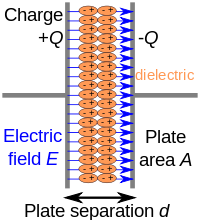
Photo from wikipedia
The microwave dielectric properties of (Mg1-xCox)2SnO4 were investigated by X-ray diffraction (XRD) patterns, Rietveld refinement, Raman spectroscopy, and microstructural observation. As x increased from 0 to 0.05, both the lattice… Click to show full abstract
The microwave dielectric properties of (Mg1-xCox)2SnO4 were investigated by X-ray diffraction (XRD) patterns, Rietveld refinement, Raman spectroscopy, and microstructural observation. As x increased from 0 to 0.05, both the lattice constant and the unit cell volume increased, indicating that the Co2+ ions effectively dissolved among the Mg2+ ions. However, when x exceeded 0.05, the Co2+ ions were not effectively dissolved. The bond length in the oxygen octahedron increased with x. In the Raman spectroscopy, the Raman peak in the A1g vibration mode shifted to a lower frequency as x increased. The (Mg0.95Co0.05)2SnO4 ceramic had the lowest FWHM of the peak in the A1g Raman mode. (Mg0.95Co0.05)2SnO4 ceramic that was sintered at 1550 °C for 4 h had a dielectric constant (εr) of 8.3, a quality factor (Q × f) of 120,200 GHz (at 17.6 GHz), and a temperature coefficient of resonant frequency (τf) of − 63 ppm/°C.
Journal Title: Journal of the Australian Ceramic Society
Year Published: 2020
Link to full text (if available)
Share on Social Media: Sign Up to like & get
recommendations!